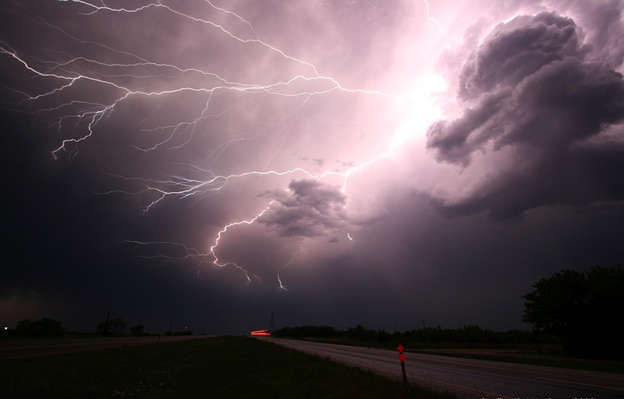A severe storm can be overwhelming to your family, home, and finances. To prevent both financial and emotional damage it’s essential to prepare ahead of time for these dire types of events. It’s important to factor in your location, the type of storm, applicable shelter, and the stockpile of supplies you’ll need as well.
Below, are some suggestions on how to prepare for a severe storm.
Step 1: Prepare
Before a storm has a chance to affect your area, it’s important to do as much preparation as you can. It’s best to initially gather as much information as you can by signing up for weather alerts or by watching your local weather program. It’s also important to stock up on supplies, such as:
- Water
- Food
- Clothes
- Tools
- Fuel
- Flashlights
- Batteries
- Radios
- Medical supplies for frostbite, hypothermia, etc.
If you have medical, educational, or legal documents, it’s also best to keep those records safe, as they may become damaged from storm-related effects.
An emergency whole-home standby generator is another smart preparation method, especially if you live in a bad weather belt or use an oxygen tank or other electricity-reliant healthcare aid. These appliances are customized to your home, run on propane or natural gas, and are designed to kick in automatically during a power outage. Alternatively, a portable generator may be a more cost-effective option.
You can also protect your home during a storm by anchoring fuel tanks, installing sewer backflow valves and smoke detectors, and by insulating and caulking various parts of your home. An evacuation route should also be planned in case of an emergency. Be sure to pack a “go bag” and plan for a place to stay in case you can’t stay in your home any longer.

Step 2: Survive
After you’ve prepared for a storm, the next step is to survive it. If you’re facing high winds during a tornado, Ready.gov explains that it’s best to seek shelter on the lowest level of rooms and buildings to prevent injury. For floods or flood warnings, move to higher ground. Also, do not drive on flooded roads.
It’s also important to limit your time spent outdoors to prevent hypothermia. Wear protective layers of clothing and watch for signs of frostbite or other weather-related injuries. If you will be using a portable generator or grill, you can prevent carbon monoxide poisoning by using these in an outdoor setting and away from windows. It’s also best to stay away from ovens or gas stovetops as heating vessels.
Step 3: Stay Safe
After a storm is over, it’s important to stay safe, as some areas may still pose a threat. Here are some ways to recover from a storm, according to NOAA.
- Wait until authorities declare an area as safe before heading home
- Avoid drinking tap water until authorities deem it safe
- If you’ll be removing heavy debris, be sure to wear proper gloves and shoes
- Watch out for downed power lines and trees
- Avoid entering damaged buildings
- Treat signs of hypothermia and frostbite
Once the storm is over there will probably be a waiting list for local contractors repairing roofs and windows, so schedule necessary home repairs asap. For example, if windows are broken you can find professional help in your area by searching, “broken window repair near me”. Better yet is to prepare by getting storm shutters or applying shatter-resistant film to the insides of your windows.
How to Distract Kids From a Severe Storm
Severe storms can be a frightening experience for kids, especially regarding the intense levels of chaos, noise, and weather-related flashes. It’s important to distract them with games, music, and other fun activities to take their mind off of a storm. You can set up a scavenger hunt, play a movie, play some fun music, or tell some stories while riding out a storm.
You could also watch a storm together with your child and teach them about how rain is important for the growth of trees, grass, and the rest of the environment. A storm can also be a way to start a new family tradition, such as watching the same movie or eating certain foods every time there is a storm. It’s also best to avoid showing kids weather-related news, as this can create more fear and anxiety for them.
Preparing and surviving a severe storm can be a stressful and challenging time for families and friends. Fortunately, you can easily prepare for a storm with the above suggestions to keep your family safe, no matter the weather condition.
You might also like:
- How to Prepare for Inflation
- Preparing for Retirement
- How to Prepare Your Budget for Big Purchases
- How to Financially Prepare Your Teenager For Buying Their First Car
- 4 Financial Hacks to Prepare for the Cost of Moving
Photo Credit: Pixabay.com


